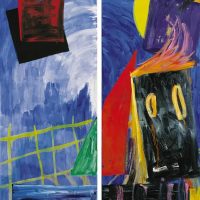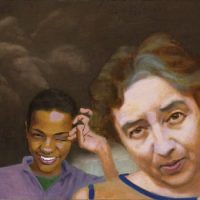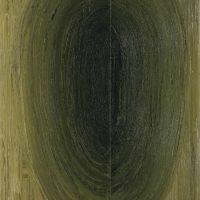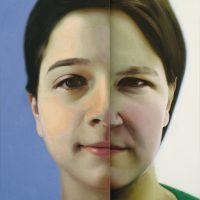This is not surprising, however, since from 1985 Birkás worked abroad with increasing frequency and for longer periods. He last had a large-scale solo exhibition in 1994 in Budapest; this was followed by a presentation in Vienna in 1997, in which he summarised the developments in his painting until that point. His new pictures have been on view in the decade since in German, Viennese and Parisian galleries.
Thus, the local art scene has received Birkás’s new pictures produced around the new millennium with not a small measure of surprise (moreover, incomprehension): these are easily painted, large-scale, realistic portraits, which might appear to be diametrically opposed to his earlier paintings, known at home.
By now, however, Birkás has taken a further departure from his abstract ovals, going as far as socio-political, narrative scenes, featuring several characters – on view for the first time at the Ludwig Museum Budapest.
That which might seem to be an unexpected turning point in the eyes of some, is actually the fruit of Birkás’s coherent artistic programme; it is an oeuvre that incessantly questions the nature, role and aims of painting (and the painter), and thus, does not remain static, but is in a constant state of flux, in motion.
Birkás’s pictures are the proceeds of a self-analysis of art and the artist (but not merely documentary), reflecting upon painting, and within this, first and foremost the intellectual relationship to portrait-painting, and this relationship, this self-reflection embraces in a single arc Birkás’s various periods, and his artworks that might appear at first sight to be inconsistent or radically innovative, or even provocative.
This retrospective exhibition does not simply align the selected pieces of his oeuvre one alongside the other, but we intend to indicate this span, as well: to the conceptual and theoretical foundations of Birkás’s painting, and to the determining questions of the development of his life-work, in these works produced from 1975 up till 2006, of diverse genre, technique and ambition.




